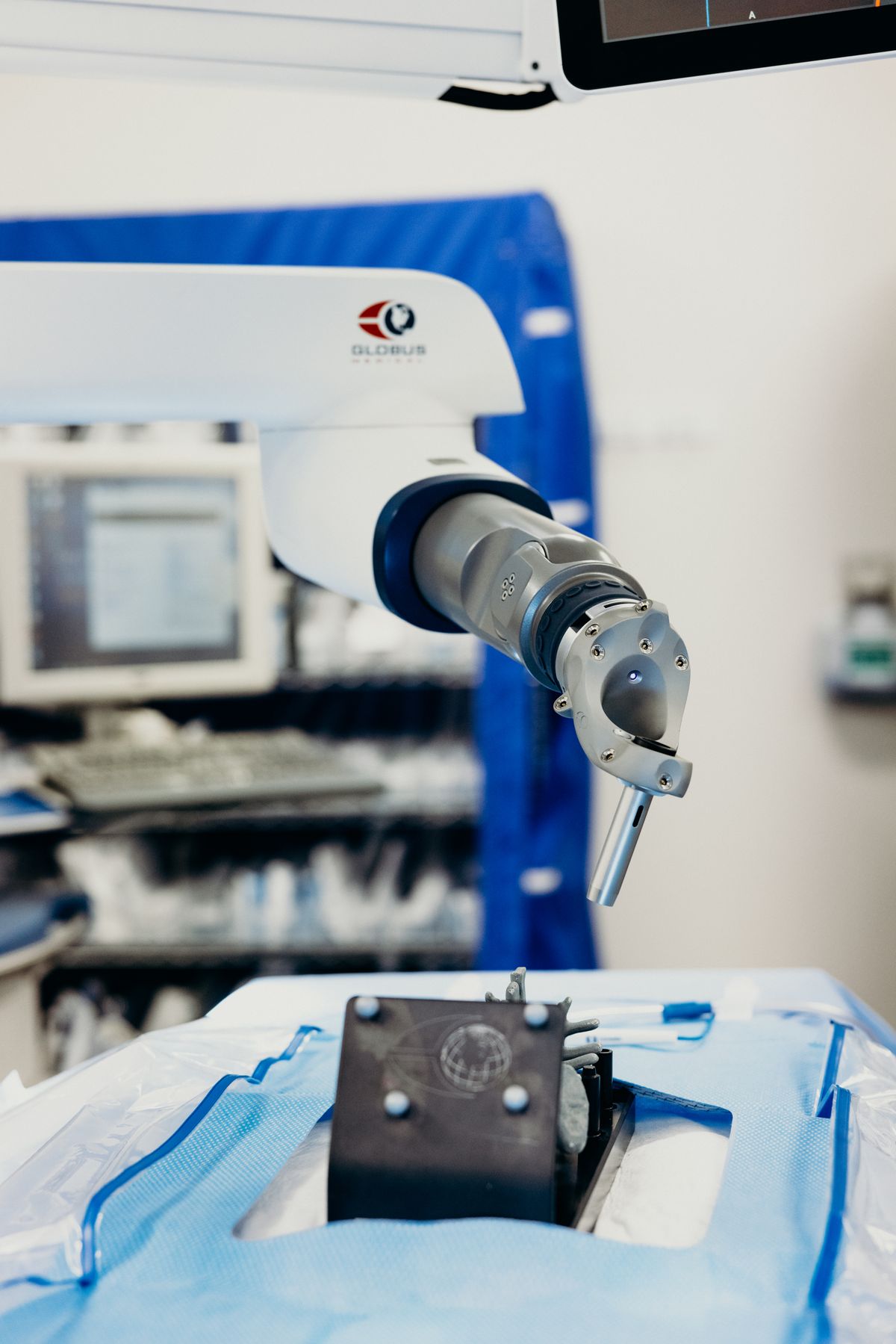Precise technology: New spine surgery robot hones in on accuracy, safety and faster patient recovery

Neurosurgeons doing spine procedures strive to be as minimally invasive as possible. Now, an advanced robotic system in Spokane offers more precise surgical navigation as doctors perform the delicate work of spine repairs.
The Providence Spokane Neuroscience Institute has used the $1.5 million Globus Medical ExcelsiusGPS robot since February. It combines surgical GPS navigation and robotic guidance to improve the accuracy of drilling and screw placement during spine surgeries.
It’s a greater push toward minimally invasive, improved safety and faster patient recovery, said Dr. Nathaniel Whitney, neurosurgeon at the Providence Spokane Neuroscience Institute. If a patient has a trauma, tumors or severe degenerative spine issues, often surgeries require incisions and placement of hardware, he said.
“That’s where this technology comes in,” Whitney said. “Because we’re placing hardware in the spine, the more accurate we do it, the better for the patient. The less we disrupt normal tissue, the better for the patient.”
The system also helps in how the surgeons can plan ahead for a surgical approach specific to a patient.
Prior to surgery, a patient’s CT scan is done and imported into the ExcelsiusGPS. The images help the surgeons create a surgical plan based on the patient’s anatomy, then do real-time road mapping and imaging feedback during the procedure.
The plan guides the rigid robotic arm to a specific region of the patient’s spine where implants can be accurately placed through a small incision. The surgical team monitors the surgical instruments and implants on the screen.
“This technology allows us to be very precise,” Whitney said. “This technology’s whole point is to help us navigate safely to place these devices.”
The surgeon does the surgery, with the robot technology assist, he said. “I’m not even across the room; I’m right there scrubbed in and doing everything. It’s just that the robot is helping me do that; it’s guiding and making sure that what I planned to do I’m actually doing.”
With the robot, surgeons can make smaller incisions and minimize disruptions to tissue by separating muscles surrounding the spine rather than cutting through them.
Using computer-assisted technology isn’t new for navigation of instrumentation for surgery, Whitney added.
This is just a more sophisticated robotic system that’s now available to the center’s doctors. The institute has eight neurosurgeons.
“All of us have the ability to use the robot; neurosurgeons do both brain and spine work, and some of us do more spine work. Three of us have used this robot here, and a couple of other surgeons are getting trained on it.
“There is always balance in being able to see enough to get the job done. Even before robotics, people were trying to be minimally invasive, and advances were made there, too.
“This is just next the step; it’s a pretty big step, of pushing us even further toward being less invasive while still being able to do whatever work we need to do to treat the patient’s problem.”
Donors provided the funding for the cost of the robot through the Providence Health Care Foundation of Eastern Washington.